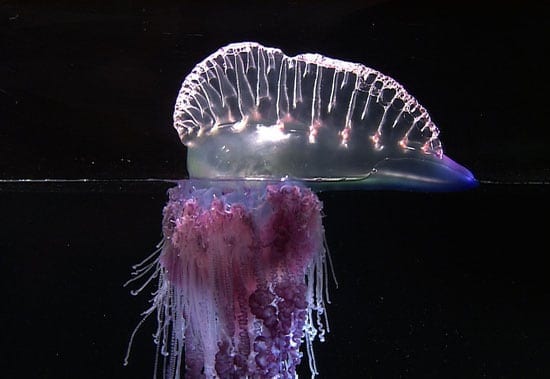Silent Stingers
July 1, 2006
Summer brings millions to the beach, and among the creatures often found in coastal waters are jellyfish. One of the most beautiful but potentially dangerous is Physalia physalis, commonly known as the Portuguese man-of-war, or bluebottle in the southern hemisphere. Normally found in warm waters worldwide, the creature has been found as far north this summer as New England, where bathers have experienced its painful stinging tentacles. The creature is actually a colony of four kinds of individuals, dependent on one another for survival. The gas-filled float, generally bottle or pear-shaped and blue although it can be shades of green or pink, supports the rest of the colony. The crest at top acts like a sail to move it through the water. Tentacles are generally up to 10 meters (about 30 feet) long but can be as long as 50 meters (165 feet). Stings from a Lion’s Mane (Cyanea), the most common large jelly, can also be painful, but fortunately most jellies found in the ocean this time of year are harmless.

